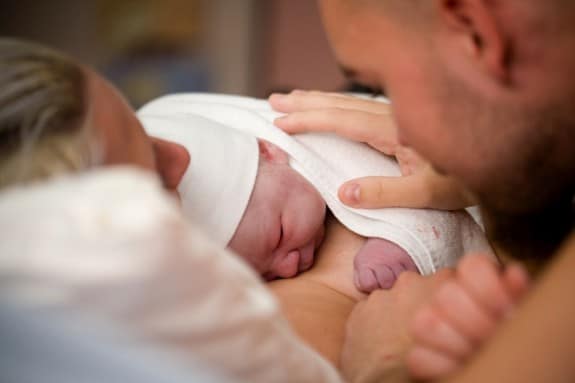The risks involved with delivering a baby by cesarean section include everything from longer healing time for mom, and missed beneficial bacteria for babies to an increased risk of SIDS and infection. In light of that knowledge, the large variation in cesarean rates found throughout Europe in a recent study are a bit concerning; they suggest that there may be a lack of consensus as to the best method of delivering a baby, and when a C-section may be warranted.
According to the new study, cesarean rates are as high as 52% in Cyprus while in Sweden, they were a mere 17%. And in the United Kingdom, one in four of all births were done by cesarean section.
For planned c-sections, the lowest rates were found in Finland (6.6%), the Netherlands (7.7%), and in Norway (6.6%). The highest were in Cyprus (38.8%) and Italy (25%). And for emergency C-section rates, the highest rates were in Romania (33%), and the lowest were in Sweden (8.6%).
“Given that people are supposed to be practicing according to evidence, it is surprising there are such wide variations between countries,” Professor Alison Macfarlane, professor of perinatal health at City University London, told BBC.
So why the big variation?
According to The Royal College of Midwives, the variation could, in part, have something to do with the different health systems available in each country.
But the lead researchers at City University London said that the varying rates could have several explanations, “including a fear of litigation, financial incentives, women’s requests for cesarean section, and the perception that cesarean section is a safe procedure.”
“A cesarean is an emergency procedure, done when a normal birth isn’t going to work,” Gail Johnson, professional advisor for education and research at the Royal College for Midwives, told BBC. “It’s not a lifestyle choice, and although it’s a safe operation, it does carry more risks than a vaginal birth.”
Which is exactly why the “continuous rise” in C-section rates throughout most European countries is so concerning.
The study revealed that C-sections were more likely to be done when the mother was delivering for the first time, when the mother was delivering multiples, or when she’d previously had a cesarean. However, study authors also pointed out that there is a continuing debate about the safety of cesareans when a baby is presenting breech, when there are multiples, or when the woman has already had a C-section. This, too, could be an explanation for why the rates are so varied.
“We need a comparative review of national policies and guidelines and further research to ensure that clinical practice is based on evidence,” Macfarlane said.
Related Articles:
- UK Company Vodafone To Offer Global Maternity Benefits To New Moms
- Breaking news: Ease labor pain with vitamin D
- Placentophagy Not a Fading Fad and US Moms Swear by its Health Benefits







